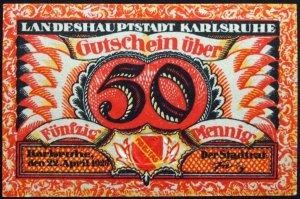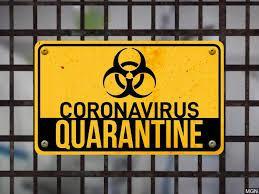 We’re now seeing pandemic literature — personal accounts from people about coping with home confinement. My own normal life is much like quarantine anyway. Luckily my business of selling collector coins, by mail and internet, is largely unaffected (though I can’t buy at coin shows). Practically my only outings are to the post office.
We’re now seeing pandemic literature — personal accounts from people about coping with home confinement. My own normal life is much like quarantine anyway. Luckily my business of selling collector coins, by mail and internet, is largely unaffected (though I can’t buy at coin shows). Practically my only outings are to the post office.

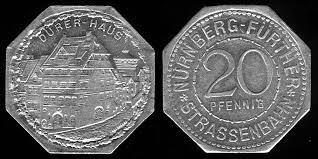
Some notgeld coins were issued in prisoner-of-war camps. “Camp” in German is “lager.” Prisoners “gefangenen.” War is “krieg.” Germans often make compound words — thus “kriegsgefangenenlagergeld.” There were also special issues using encapsulated stamps. Those are kriegsgefangenenlagerkapselgeld. One sees these words in German coin sale catalogs. I remember using this as an example, when telling my small daughter about German compound words. Afterward she danced around merrily chanting, “kriegsgefangenenlagerkapselgeld, kriegsgefangenenlagerkapselgeld.”
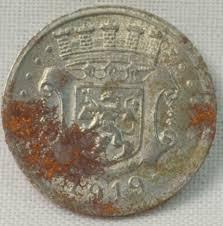
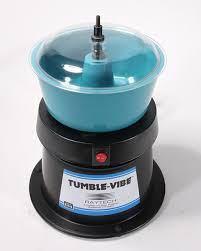
Happily this lot had come alphabetized by town in small envelopes. That saved some effort, but I did have to re-sort the ones I’d tumbled. Next, the real work: having handled thousands before, most of the common ones I could recognize as such, but many I had to research. There isn’t a good up-to-date catalog. I have two older ones that often disagree, but between them I can get an idea about scarcity, to price accordingly.
About 150 better ones I pulled out to sell individually. The rest in group lots. I learned this shtick early in my coin dealing, when I put out a price list including many common German coins at ten or twenty cents each. They didn’t sell. Preparing my next list, I didn’t feel like retyping all that (this was before word processing). So I just added up the prices and entered “Lot of X-number of German coins” at that combined amount. Guess what? Everybody wanted to order it! Collectors love to play around with coins in batches like that (I do too), and it’s a very effective selling tool. Also far more efficient than hawking them one-by-one.
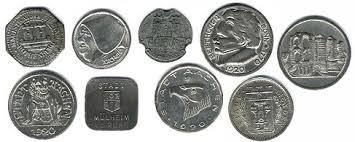
All in all, a lot of work. But having gotten this lot at a very nice price, little over a dollar per coin, I’ll wind up making a couple of thousand on the deal — while having had a lot of fun, and improving my notgeld knowledge. Though my hand is a bit sore from all the wire brushing.
